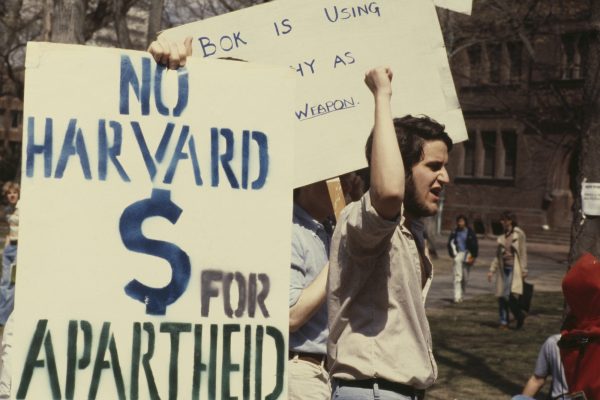Editors’ Note: This forum is featured in our spring 2023 issue. Order a copy here.
Christine Sypnowich argues for a radical egalitarian ideal according to which people possess “not just opportunities to flourish but actual flourishing.” In making her case, she attacks equal-opportunity theory—luck egalitarianism, in particular—for merely equalizing opportunities, which in her view won’t guarantee radical egalitarian outcomes because poor outcomes will be attributed to poor choices.
Thus, Sypnowich is a left-wing critic of equal opportunity: she believes that it endorses unacceptably high levels of inequality and holds individuals responsible for too much. Indeed, she considers any talk of responsibility regarding opportunity as being ipso facto right wing.
Yet equal opportunity theory is itself neither left- nor right-wing; it prescribes a degree of redistribution, or compensation for disadvantage, that reflects our choices about the goal we are aiming for. The more circumstances—the social and biological facts that people are born with or into—that we correct for, the greater the benefit for the disadvantaged and the less individual responsibility will matter. As a quite radical egalitarian, I would choose a large set of circumstances, but equal opportunity theory is flexible. As I proposed in my 1993 model of equal opportunity theory (EOp), each society can choose the set of circumstances to address and set policy accordingly.
In EOp, we begin with a population and choose to maximize some objective—perhaps a narrow one, such as wage-earning capacity, or perhaps a more demanding and complex one, like flourishing. We say someone is advantaged if their circumstances are propitious for achieving that objective; otherwise we say they are disadvantaged. The goal of the state (or the equal-opportunity social planner) is to choose the policy—from set of feasible policies that the state can provide—that maximizes the average value of the objective for those who are most disadvantaged. The values of the objective will vary even among people with the same circumstances because of their individual choices, or effort. We call all individuals with the same circumstances members of the same type.
If the objective is wage-earning capacity, the policy might be a tax rule that collects funds to finance education. Typically, the tax policy collects funds from citizens and allocates them unequally: more disadvantaged children receive more educational resources. Say that a policy is complete if the average value of the objective is the same for advantaged and disadvantaged people alike. Complete policies are a rarity. Nonetheless, EOp policy can be said to “level the playing field” through social provision of resources to disadvantaged types. This concept of equal opportunity is different from a meritocratic approach, which seeks to correct only for discrimination.
In EOp theory, members of the population are viewed as not being responsible for their circumstances, but they are responsible for their efforts or choices to the extent that the model allows it. Some members of a disadvantaged type may make poor choices relative to the actions of others with the same circumstances. However, if being poor choosers is characteristic of people with certain circumstances, its members will be compensated, not punished.
On this model, the more conditions we categorize as circumstances, the less choice matters. As the grid of circumstances becomes ever finer, each individual will eventually be the sole member of their type. In this extreme case, circumstances determine everything, and equality of opportunity dissolves into equality of outcomes. If we choose a small set of circumstances, by contrast, choice (or effort) becomes very important; in the extreme, there is only one type, and individuals are fully responsible for everything. The more social democratic a society, the more circumstances it will use to justify compensatory social policy. When conservatives complain that the welfare state manages a person’s life, they mean that leftist social planners annihilate the role of choice.
The model I have presented covers many possible situations, but I will not claim it can be applied to every problem. If it applies, then a society or planner, by their choice of circumstances and typology, can produce an equal opportunity policy that is consonant with its views on how free individuals are to affect the outcomes they come to experience. As G. A. Cohen writes in Why Not Socialism? (2009):
Socialist equality of opportunity seeks to correct for all unchosen disadvantages, disadvantages, that is, for which the agent cannot be held responsible, whether they be disadvantages that reflect social misfortune or disadvantages that reflect natural misfortune. When socialist equality of opportunity prevails, differences of outcome reflect nothing but difference of taste and choice, not differences of natural and social capacities and powers.
Sypnowich’s goal would be to choose a social policy that equalizes the personal level of flourishing over all members of society, at the highest possible level. (Because this goal will be vulnerable to the leveling down objection—the thought that to make us equal, we should simply reduce the advantaged to the level of the most disadvantaged—she might instead take the goal as maximizing the minimum level of flourishing over all citizens.) Note that, for Sypnowich, circumstances and choice are irrelevant in defining the social optimum; how policies bring about distributions of flourishing is the only relevant factor. We cannot engage in responsibility talk in her model because it has no implications for what the social optimum is.
The EOp approach is different. As a social scientist, I try to keep an eye on the data. We want models that can be calibrated with available data sets. Philosophers often do not so constrain themselves. Using available data sets, one can run the model and calculate actual social policies that equalize opportunities, as a function of the set of circumstances we choose to represent our views on what individuals should be held responsible for.
There is an ever-growing statistical literature that employs data to calculate how much inequality in different countries is due to inequality of opportunity. That is, one can decompose total inequality—of income, for instance—into parts due to differential circumstances and differential effort or choice. Only a few rich countries have data sets that collect information for a sufficiently dense set of circumstances. For the United States, using the most complete data set, we estimate that about half of income inequality is due to circumstances, and the other half is due to the effort and luck. This surely underestimates the true role of circumstances, as there are doubtless circumstances we do not record. But we can still use the EOp theory to advocate equality-increasing reforms.
In short: despite Sypnowich’s skepticism, the EOp approach can be an effective strategy for equality of outcomes, as it calculates a policy that can equalize outcomes to a chosen degree. We only need to agree on our goal.
We’re interested in what you think. Submit a letter to the editors at letters@bostonreview.net. Boston Review is nonprofit, paywall-free, and reader-funded. To support work like this, please donate here.








